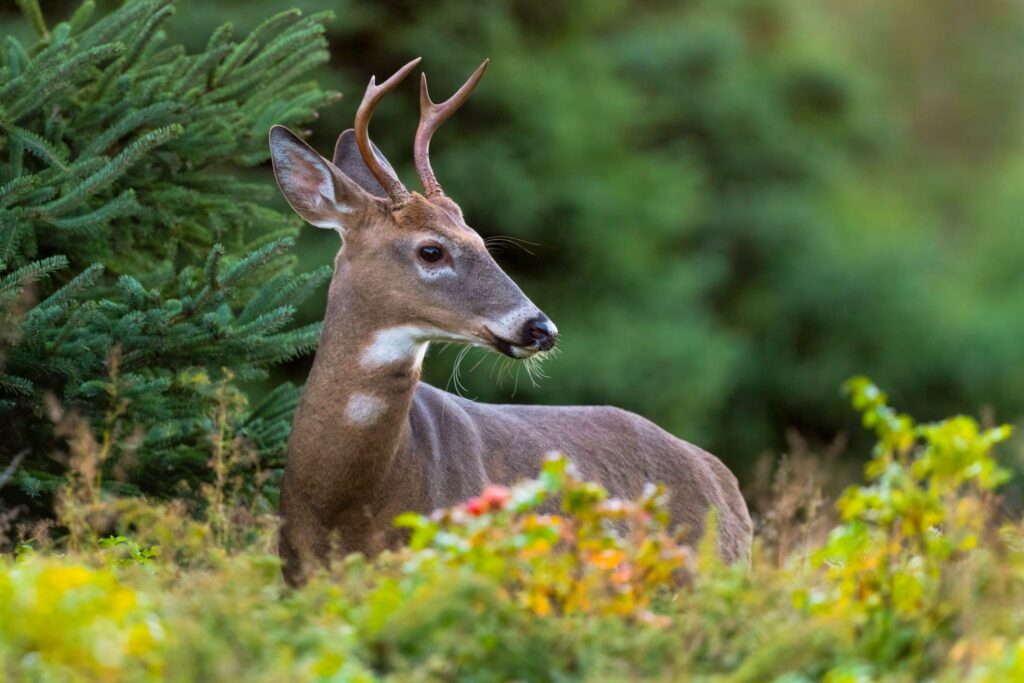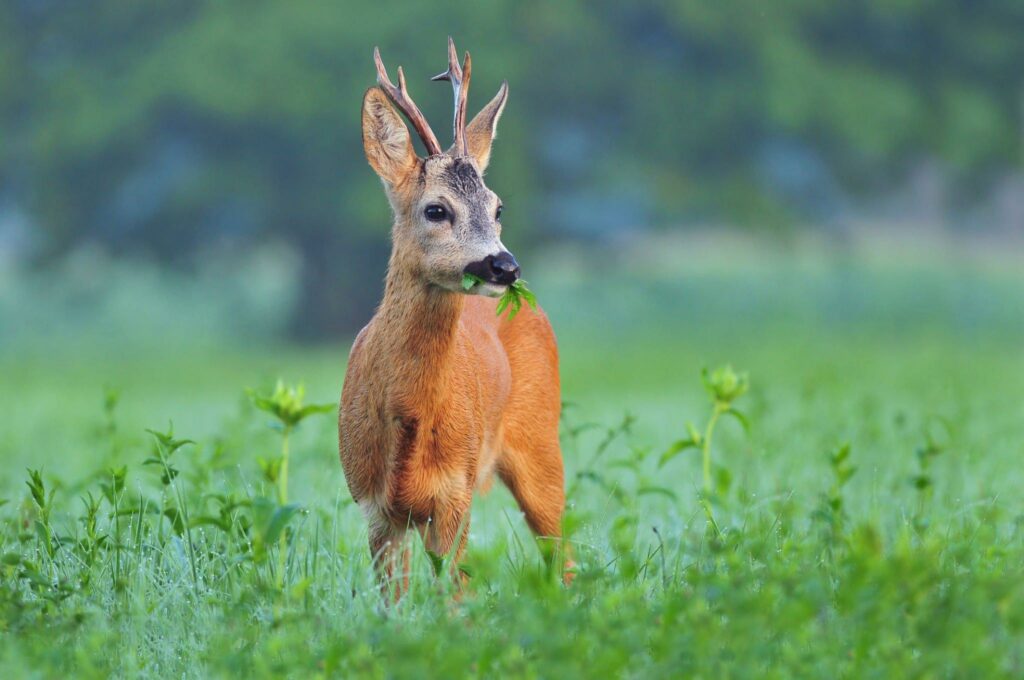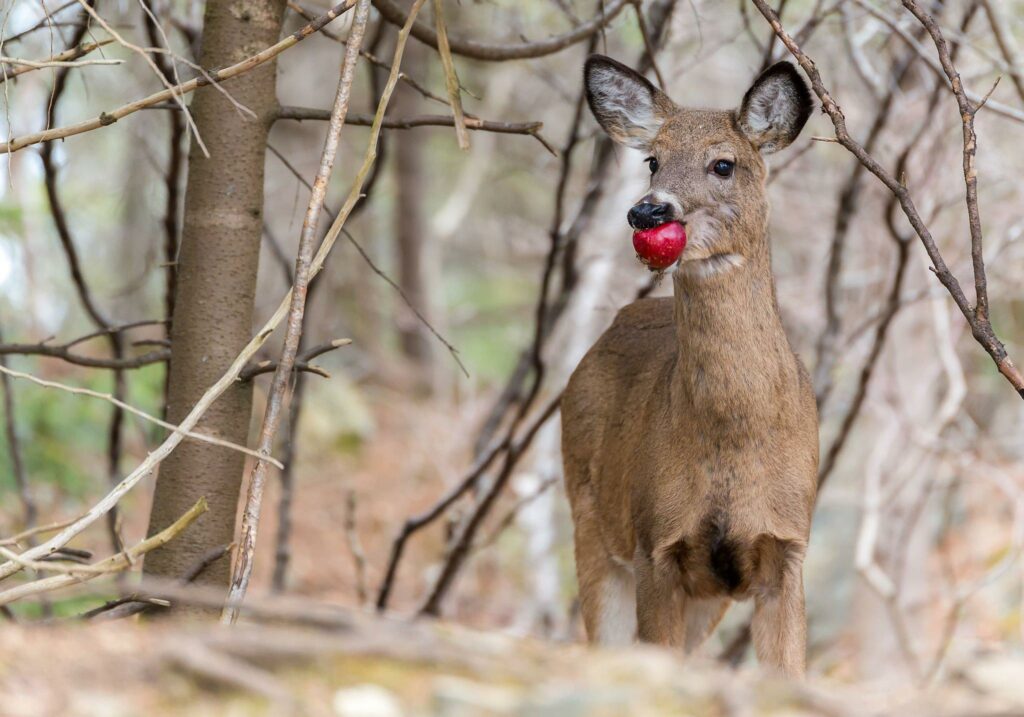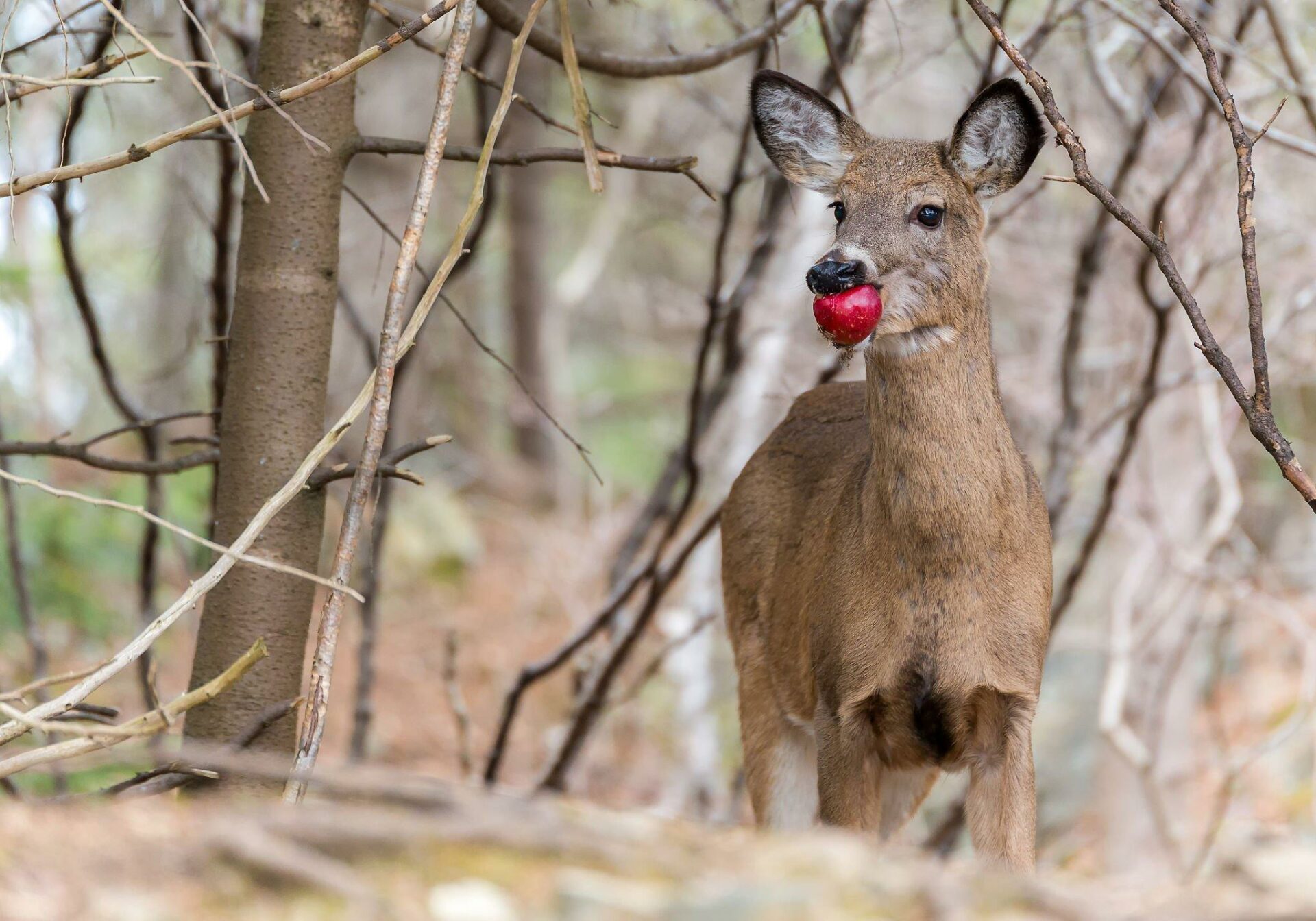Explore Deer’s Favorite Foods: What Nourishes Nature’s Grazers?
Explore the delectable delights that sustain deer in the wild! From lush greens to nutrient-rich browse, discover the secrets behind deer’s favorite food choices and how they contribute to their vitality and survival. Start your journey into the wilderness today!
Introduction
Deer, those graceful and enchanting creatures, possess discerning tastes when it comes to their diet. Understanding their favorite foods not only assists wildlife enthusiasts but also helps foster a thriving environment for wildlife. We are going to examine the culinary delights that entice these beautiful creatures.
Deer’s Favorite Food
Deer have a varied diet that includes a range of favorite foods such as acorns, alfalfa, apples, and beechnuts, providing essential nutrients and energy. They also enjoy brassicas, cereal grains like wheat and oats, clover, and corn, especially during the winter months. Legumes like cowpeas, seasonal items such as fall leaves, fir needles, and forbs, as well as grains like milo, are part of their diet. Deer are also known to feed on northern white cedar foliage, sweet fruits like persimmons and pears, young saplings and shrubs, protein-rich soybeans, and treetops from felled or fallen trees. These diverse food sources play a crucial role in the diet and survival of deer in their natural habitat.
In More Detail
Deer have a complex and adaptive diet that allows them to thrive across various habitats by utilizing a wide array of available food sources. Each type of food they consume plays a significant role in their nutritional intake, ensuring their survival and health throughout the year.
- Acorns and Beechnuts: These nuts are highly prized by deer, particularly in the fall. They are rich in fats and proteins, which are crucial for building energy reserves to survive the harsh winter months.
- Alfalfa, Clover, and Legumes: These plants are important in a deer’s diet due to their high protein content and digestibility. Alfalfa and clover are often sought out in fields and meadows, while legumes like cowpeas provide essential nutrients that support health and reproductive success.
- Brassicas and Cereal Grains: During the colder months, deer often turn to brassicas (such as cabbage and kale) and cereal grains like wheat, oats, and milo. These provide carbohydrates that help deer maintain energy levels when other food sources are scarce.
- Corn: Corn is another carbohydrate-rich food that deer consume, especially in late autumn and winter. It offers high caloric content which is vital during the colder, food-scarce months.
- Fruits and Berries: Sweet fruits like apples, persimmons, and pears are especially favored by deer and are important for their sugar content. These fruits are typically eaten in late summer and fall when they are most ripe.
- Foliage and Forbs: Deer consume a variety of foliage from trees like the northern white cedar, as well as various forbs and soft-leaved plants found throughout their environment. These are important in the spring and summer when deer require nutrients to aid in growth and the lactation period for fawns.
- Seasonal Items: Items such as fall leaves, fir needles, and young saplings provide necessary fiber and other nutrients that can help deer regulate their digestion and maintain overall health.
- Tree Tops and Shrubs: After storms or logging activities, deer often feed on the treetops of felled or fallen trees. This behavior allows them to access parts of the vegetation that would normally be out of reach, including young, nutrient-rich saplings and shrubs.
Unveiling Deer’s Culinary Delites in Detail
Deer’s Fascination with Nutritious Greens
There is something intrinsically appealing about greenery. Deer enjoy a wide variety of plant species, including clover, alfalfa, and chicory. These leafy greens provide vital nutrients required for their growth and wellbeing.

Scrumptious Berries and Fruits
As a delicacy among forest offerings, berries and fruits are of particular interest to deer. Their preference for berries such as blackberries, raspberries, and strawberries is similar to our own sweet cravings. Additionally, the succulence of apples and pears captures their attention, making orchards a preferred stop for these animals.
Acorns and Nuts
The crunch and taste of nuts are irresistible to these majestic animals and are a source of sustenance and enjoyment for them. They gather acorns and nuts throughout the year from oak trees and walnut groves.
Irresistible Forbs and Herbs
The varied flavors and textures offered by forbs and herbs are very appealing to deer. Many of these plant species, including goldenrod, aster, and wildflowers, are particularly attractive to them.
Deer’s Preference for Agricultural Crops
Despite sometimes being challenging for farmers, agricultural crops play a significant role in the deer’s diet. Crops like soybeans, corn, and wheat appeal to the deer’s taste buds, which leads to the deer occasionally entering farmlands.
The Temptation of Twigs and Bark
As a result of scarce greenery during the winter months, deer rely on twigs and bark for sustenance. While they are not their primary food source, the woody offerings provide essential nutrients at a time when other sources of food are limited.

The Significance of Deer’s Favorite Food
The study of a deer’s favorite foods is not only helpful for observing wildlife, but also for conservation efforts. Planting these species can attract and sustain deer populations, which thereby contributes to the balance of the ecosystem.
Nutrition and Dietary Impact
A comprehensive understanding of the dietary habits of deer goes far beyond merely being fascinated by their food choices. It is a crucial component to appreciating their role in the ecosystem and ensuring their wellbeing.
Balanced Nutrition for Deer Health
As a result of their innate ability, deer are able to select a wide array of food sources that meet their nutritional requirements. Through selective feeding, they receive a well-rounded diet rich in protein, carbohydrates, vitamins, and minerals which are essential for their growth, development, and well-being.
Each type of vegetation contributes unique nutritional elements to their diet, resulting in a variety of vegetation types. As an example, grazing on grasses such as fescue and clover provides them with easily digestible nutrients, whereas browsing on leaves and twigs from oak and maple provides them with vitamins and minerals that are hard to digest.
Ecosystem Impact: Foraging Dynamics
There is no doubt that deer’s dietary habits have a significant impact on their environment beyond their individual nutritional needs. They significantly impact ecosystem dynamics through their foraging behaviors.
Deer contribute to the diversity of the landscape by selecting specific plant species to consume. Their preference for specific vegetation shapes the growth patterns of plants and impacts forest regeneration. This foraging behavior creates a delicate balance within the ecosystem, promoting the growth of certain species while regulating the proliferation of others.

The Environmental Significance
There is a complex interplay between deer nutrition and the environment that has a profound influence on the health of forests and meadows. Their role as selective feeders has a significant impact on the composition and structure of plant communities, affecting the ecosystem as a whole.
As a result of their diverse diet, they prevent overgrazing of specific plant species, thereby creating a more resilient ecosystem that supports a broader range of wildlife, thereby ensuring a sense of harmony within the natural environment.
Conservation Implications
The knowledge of the dietary impact of deer is fundamental to conservation efforts, as it allows conservationists to manage habitats effectively, ensuring both a sustainable environment for wildlife and humans.
Conservationists aim to preserve biodiversity and the intricate web of life within these ecosystems by preserving the variety of vegetation that makes up the diet of deer.
FAQs
What attracts deer to specific foods?
As a rule, deer choose to eat foods based on their nutritional value, taste, and availability. However, their preferences may also vary from season to season depending on the availability of the food.
Can feeding deer negatively impact their health?
It is important to exercise caution when feeding deer, as it can alter their natural behavior and diet, potentially resulting in health problems and causing them to become dependent on humans.
How can one attract deer to their property?
It is possible to attract deer to your property by creating a diverse environment with a mix of preferred plants, providing sources of water, and avoiding excessive disturbances in the area.
Do deer have regional food preferences?
There is no doubt that deer display variations in their food preferences based on the vegetation and climate conditions in their region.
Is it advisable to feed deer in one’s backyard?
In residential areas, feeding deer can disrupt deer’s natural behavior and may lead to conflict with residents. The best way to avoid conflict with deer is to create a deer-friendly habitat without feeding them directly.
What is the role of deer’s diet in ecosystem balance?
The deer play a crucial role in shaping ecosystems through their feeding habits. By consuming specific plants, they influence vegetation growth and thus impact on the overall ecosystem as a whole.
Conclusion
In addition to deer’s unique diet preferences, we can also enrich their lives by understanding and respecting the types of food they prefer. By understanding and respecting the types of foods they prefer, we not only enrich their lives but also contribute to the harmony of our natural environment.







